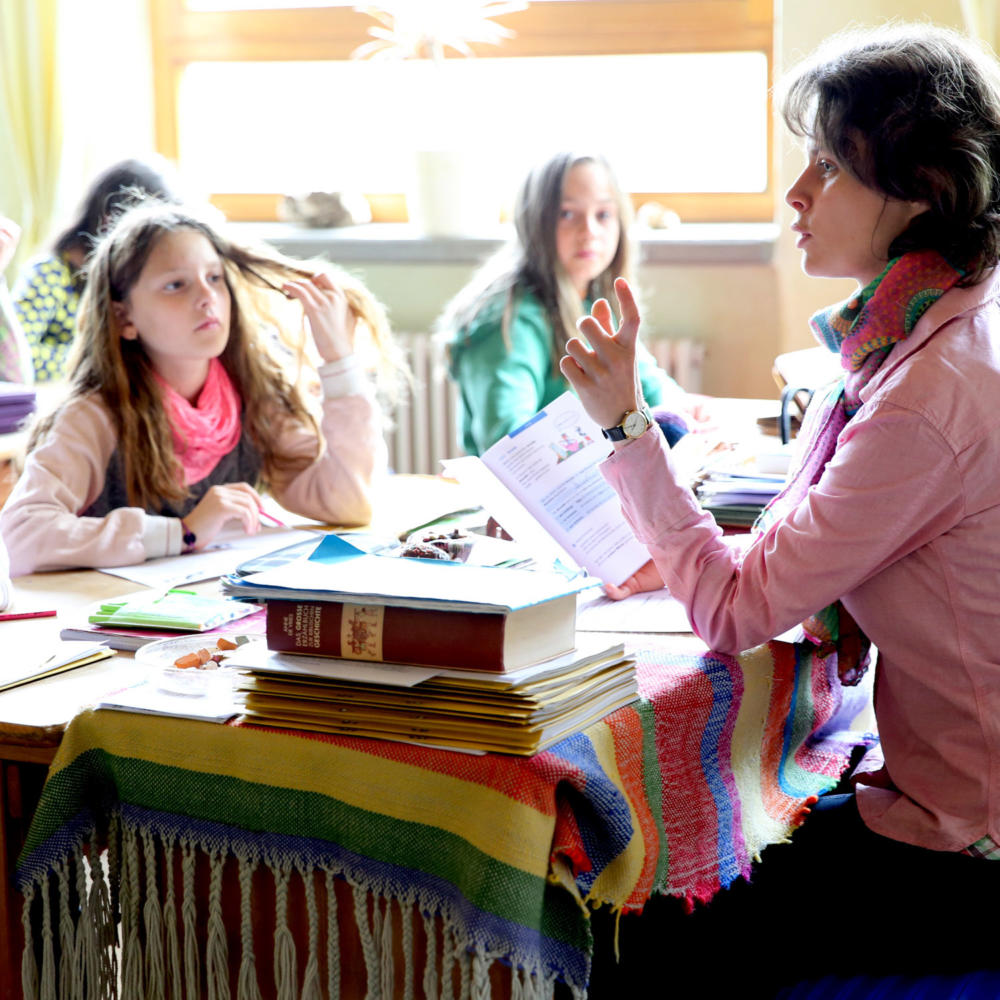Being aware of our humanity
As a result of the Coronavirus measures, schools and educational institutions around the world are exposed to the impact of digital technology. One of the features of this technology is that it outpaces human achievements. If we don’t widen our perspectives, we may lose sight of the very qualities that make us human.
Keep realizing your potential! That is the motto of education today. We can keep educating ourselves, discovering and creating. The expectations are so high that stress is almost the logical consequence. Alain Ehrenberg foresaw ‘the Weariness of the Self’ in 2008 (in his book by the same title). In order to avoid this from happening, one begins to look for safe ways of meeting the demands. One such way is informed by power and control. Anything that cannot be calculated and planned is questionable. The world is currently witnessing the large-scale installing of a control mechanism that reawakens the old belief that human beings and the world can be controlled.
The use of technology, which makes the realization of these principles possible, has a tacit precondition: its availability – and therefore excludes anyone who has no access to it or who finds using it difficult. There is also the danger of being reduced to what this technology ‘can do’. Finally, it is discriminating when access to a teacher is a question of wealth, in the sense of ‘machines for the poor, human contact for the rich.’
Effective through presence
This brings us to a second way of meeting the demands mentioned. This way is based on relationship. People we relate to don’t punish or threaten; they are effective through their presence. They keep the offer of relationship open, independently of the other’s behaviour. The control they exercise is self-control. They deal with transgressions without questioning the relationship. They consistently address the good in us.
In our struggle to deliver education as an art in the face of regulations and online teaching, there are moments when new qualities of humanness light up. Take the moment when a major challenge is only resolved thanks to teachers and parents working together: personal letters are written, phone calls made, tasks allocated. Or the moment when, after weeks of distancing, a student meets her teacher face to face again. In the words of the colleague, “There was a new mutual awakening to the other – this is you!” A sudden conscious awareness of what is usually overlooked in the other person.
The vibrancy of the encounter
The description of the sense of ‘I’ in Lecture 8 of Rudolf Steiner’s First Teachers’ Course (GA 293) becomes tangible: in the immediacy of the encounter, in the ‘vibrating’ between sympathy and antipathy, between devotion and consciousness, we can perceive the essence of the other. For the older generation, too, there are such moments of ‘becoming aware of the other in a new way’ as we alternate between weeks of online meetings and real encounters.
Joint responsibility
The second requirement [for esoteric training] is that we feel we are part of the whole of life. […] We can only meet this condition individually, each in their own way. If I am a teacher and my student fails to meet my expectations, I should initially not direct my feeling against the student but against myself. I should feel at one with my student to an extent that I ask myself, “Is my student’s shortcoming not the consequence of my own actions?” […] With this inner attitude I will also look differently at a criminal, for instance. I will reserve judgement and tell myself, ‘We are both human beings. I was fortunate enough to have had an upbringing that saved me from a fate like theirs.’ […] I will contemplate everything I had that the other person did not have; that I owe my good fortune to the fact that it was withheld from them. This will bring me closer to the idea that, as members of humanity, we are jointly responsible for everything that happens.
Source Rudolf Steiner: GA 10, Chapter 5

